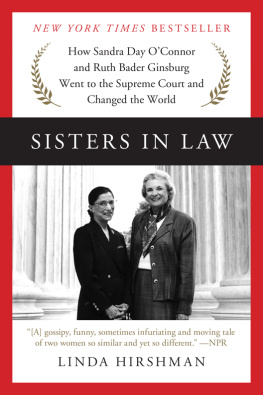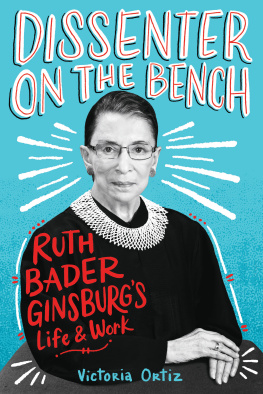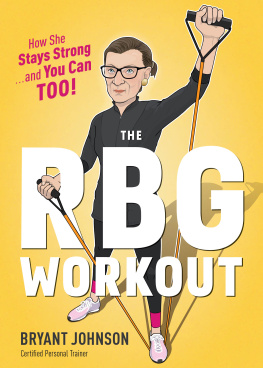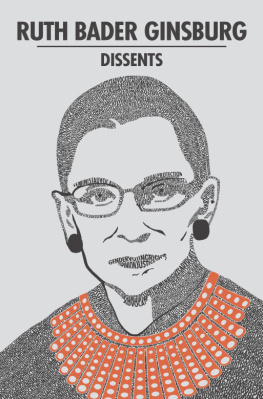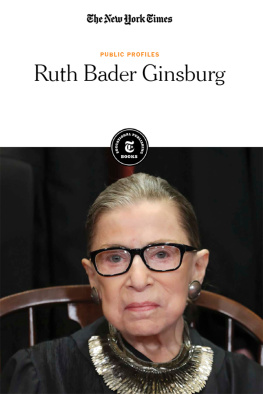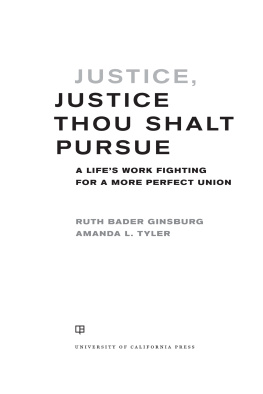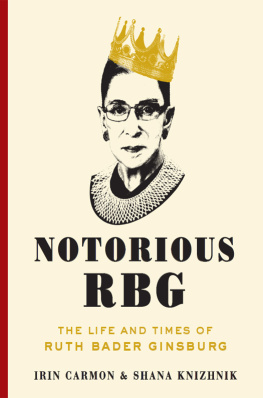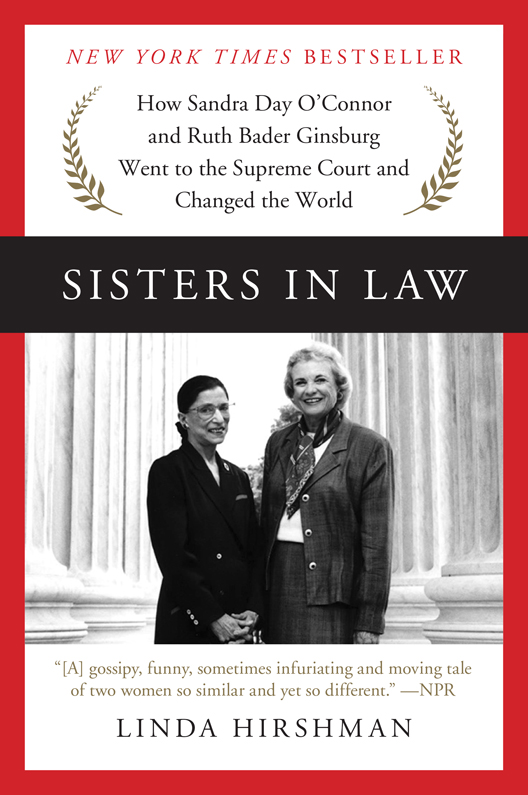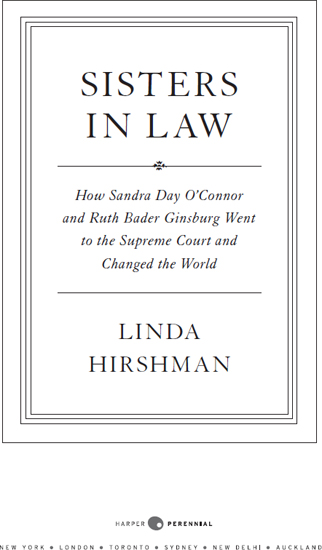Womens names and titles matter. They are so hard won. The convention in journalism is to add the title Justice when introducing a Justice or when the role is particularly meaningful to the content of the text. Otherwise, Justices are referred to by their last namesRehnquist, Burgerlike any other public figures being discussed. Obama. Biden. I have followed this custom except where another speaker refers to them in some other way.
Unlike the male figures who shape the norm, my subjects had different names when they were youngDay and Bader, rather than OConnor and Ginsburg. When discussing the youthful Sandra Day and Ruth Bader, I usually use their first names. Even Supreme Court justices were kids once.
By the time the nation celebrates the birth of its democracy each Fourth of July, the nine justices of the Supreme Court have mostly left town. But before departing the capital for their summer recess, they must first decide all the cases they have heard since their current term began the previous October. The hardest, most controversial cases, where the unelected Court orders the society to change in a big way, are often left to the end. As the days for decision tick away in late June, the tension in the courtroom is as hot and heavy as the Washington summer air.
On the morning of June 26, 1996, Justice Ruth Bader Ginsburg, the second woman appointed to the high court since its founding, slipped through the red velvet curtain behind the bench and took her seat at the end. Five places along the majestic curve sat Justice Sandra Day OConnor, since 1981 the first woman on the Supreme Court, or the FWOTSC as she slyly called herself. Each woman justice sported an ornamental white collar on her somber black robe, but otherwise there was no obvious link between the First and Second, any more than between any of the other justices. On that day, however, the public got a rare glimpse at the ties that bound the two most powerful women in the land.
Speaking from the depths of the high-backed chair that towered over her tiny frame, Justice Ginsburg delivered the decision of the Court in United States v. Virginia. From that morning in June 1996, Virginias state-run Virginia Military Institute, which had trained young men since before the Civil War, would have to take females into its ranks. The Constitution of the United States, which required the equal protection of the laws for all persons, including women, demanded it.
Women in the barracks at VMI. Women rolling in the mud during the traditional hazing, women with cropped heads and stiff gray uniforms looking uncannily like the Confederate soldiers VMI had sent to the Civil War a century before. Six of Ginsburgs brethren on the Court agreed with her that VMI had to admit women, but the case was much more contentiousand momentousthan that robust majority of seven reflects. Until that day, VMI had been the shining symbol of a world divided between mens and womens proper roles. Before the case got to the Supremes, the lower federal courts had supported VMIs sex-segregated ways. For years, opponents of feminism used the prospect of women in military settings as the prime example of how ridiculous the world would become if women were truly treated as equal to men. VMI was one of the last redoubts. And now Justice Ginsburg, who, years ago as Lawyer Ginsburg, had been the premier advocate for womens equalitythe Thurgood Marshall of the womens movementwas going to order the nation to live in that brave new sex-equal world.
Few people listening knew that Ginsburg got to speak for the Court that morning, because her sister in law, OConnor, had decided she should. After the justices voted to admit women to VMI at their regular conference, the most senior member of the majority had the right to assign the opinion to any justice who agreed. He assigned it to the senior woman, Sandra Day OConnor, but she would not take it. She knew who had labored as a Supreme Court lawyer at the American Civil Liberties Union from 1970 to 1980 to get the Court to call women equal. And now the job was done. This should be Ruths, she said.
On decision day, justices do not read their whole opinions, which can often run to scores of pages. That morning, Ginsburg chose to include in her summary reading a reference to Justice OConnors 1982 opinion in Hogan v. Mississippi, which had prohibited Mississippi from segregating the sexes in the states public nursing schools. OConnors opinion for the closely divided court in Hogan, Ginsburg reminded the listeners, had laid down the rule that states may not close entrance gates based on fixed notions concerning the roles and abilities of males and females. And then Ginsburg, the legendarily undemonstrative justice, paused and, lifting her eyes from her text, met the glance of her predecessor across the bench. She thought of the legacy the two were building together, and nodded. Justice Ginsburg resumed reading the opinion.
Every woman in America was in the courtroom that June day in 1996. Whether you were a Supreme Court lawyer or a stay-at-home mom, pro-choice or pro-life, single or married, having sex in the city or getting ready for a purity ball, in their journey to that day, and on that day, these women changed your life. And so of course changed the lives of men as well. Justices OConnor and Ginsburg have a stunning history of achievement in a wide range of legal decisions. But Sisters in Law tells the story of how together at the pinnacle of legal power they made women equal before the law. They argued for equality, they were the living manifestations of equality, and, because they took power before the revolution was over, they were in the unprecedented position of ordering equality. When women are treated as equals, as Gail Collins memorably said in her bestselling book, everything changes.
When I graduated from law school in 1969, one of seven women in a class of 150, to start my career as the only female associate in my firm of sixty, the world of the law was the last place where I expected to see change. Interviewers had felt free to tell me their firms did not hire women and did not care if I had made law review. When I stood up to argue my first case in the Supreme Court seven years later, there were just the Nine Old Men. But starting with the admission of serious numbers of women to law school in 1967 and certainly by the time of the Supreme Court decision in

